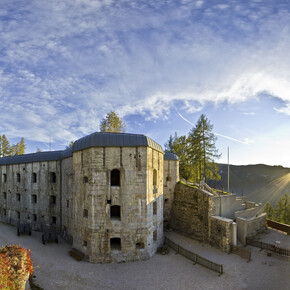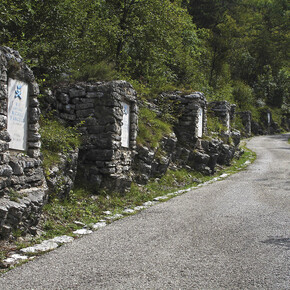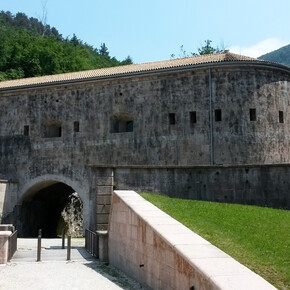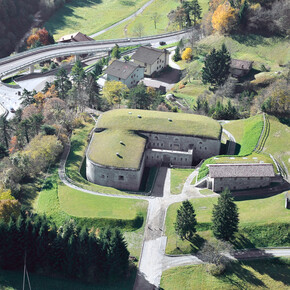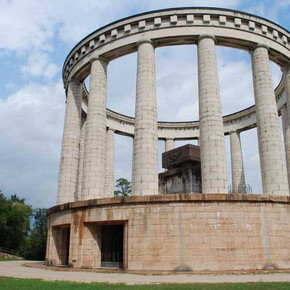The Trincerone
Monte Zugna is a mountain is steeped in history and offers a wide range of opportunities to visit sites and see artefacts dating back to the Great War.
During World War I it was of great strategic importance for the Italian army. Taking possession of Monte Zugna enabled the Italians to hold off Austrian attempts to break through the lines, both on the Vallarsa ridge and in the Valle dell'Adige. The Italian "Trincerone" was the last defence stronghold against the Austro-Hungarian offensive, which began on 15 May 1916. The Imperial troops, forced to halt their advance, set up an initial line of defence ("Kopfstellung"), made up of trenches and communication trenches, outposts and machine gun and mortar posts.
From the "Trincerone", the Italians could get a glimpse of the city Trento, one of the objectives they were fighting for; on the other hand, from their front line the Austro-Hungarians could see a corner of Lake Garda and the Veneto-Padana plain, the launching ramp for the long sought-after breakthrough which would have finally solved the contention.
Visitors Route
A new visitor's route is now available along the Monte Zugna front along which a large number of panels have been installed explaining and describing events. The route runs through the front lines of the two armies and along the Italian "Trincerone" in particular. Along this section the opposing trenches were only about 150 metres apart and there were only 40 metres between the outposts. This close vicinity, which can only be seen in a few other sections of the Italian-Austrian front, makes this an area of outstanding interest.
The visitor's route forms a 1.5 km ring, with elevation gains of 90 metres; the site is reached along the road leading from Albaredo to the Coni Zugna refuge.
The circular route starts near the forestry road leading to "Foraora", around 3 km from the "Damiano Chiesa" refuge. From the communication trenches leading up to the Austrian front line, visitors can see craters of various sizes hollowed out by grenades. Explanatory boards illustrate the Austro-Hungarian network of posts and tunnels where the company commander lodged and which provided various types of shelter; the searchlight emplacement and the outposts known by the Italians as the "Sassi Bianchi" can be visited.
Just a few metres further on through "no man's land" the Italian posts can be seen, more precisely, the outpost to the left of the "Trincerone" (Erster Felsen (first cliff) for the Austrians). Here too there is a network of tunnels, the company command headquarters and paths leading to the outposts. A short ascent leads to the tunnel known as "Galleria D" while a surfaced road beyond the "Trincerone" leads to the "midway blockade". To visit these turn left and ascend onto the Vallarsa ridge (magnificent view over the Pasubio and towards the Altipiani). From here another communication trench leads back to the "Trincerone" where the absence of trees enables Trento to be seen.
Follow the "Trincerone" as far as the Italian right-hand outpost. Cross "no man's land" once again to reach the Austro-Hungarian "Baracchino" outposts. Along the ridge, entrances to tunnels and caves can be noted; return to the Austro-Hungarian front line along a communication trench and once back on the road, skirt the machine gun post and follow a communication trench back to the starting point.


